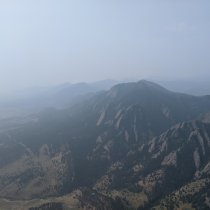Data Notification
Updates to AOP’s Spectrometer Orthorectified at-Sensor Radiance data product
February 4, 2021
AOP has updated the file name, format and metadata for the Spectrometer Orthorectified at-sensor radiance data product (DP1.30008.001).
1. The radiance HDF5 filename has been modified by replacing the 6 digit (HHMMSS) unique identifier based on acquisition time, with a flight plan line number. The 6-digit code can still be retrieved from the HDF5 file attributes if needed.
Example:
Previous File Name: NEON_D10_R10A_DP1_20200607_151846_radiance.h5
Current File Name: NEON_D10_R10A_DP1_20200607_L001-1_radiance.h5
This change was implemented to facilitate matching the radiance flight lines with the lidar flight lines, which are also named according to the line number. Note that reflectance files (NEON.DOM.SITE.DP1.30006.001) maintain the 6-digit code, but are also planned for a file name update by January 2022.
2. A bad detector element (BDE) mask has been included under ‘Ancillary_Rasters’. This mask will allow users to identify pixels which have been determined in internal QA checks to be of low quality. These low quality pixels have undergone a statistical correction based on surrounding pixel values to predict their value. The addition of the BDE mask raster only applies to data collected for year 2020 onwards, however, this correction has been consistently applied to data from all years.
3. The at-sensor radiance raster has been updated. In previous versions of the product, the at-sensor radiance data values were each represented as a single precision float. In the updated product, the radiance data has been split into separate ‘integer’ and ‘decimal’ rasters. The integer raster contains the original whole number of the radiance, now stored as an unsigned 8-bit integer. The decimal portion is the fractional radiance component scaled by 50000, and stored as an unsigned 16 bit integer. This saves one byte of storage per pixel. Compression of the data is also slightly improved resulting in an overall storage reduction of approximately 50% per data file, with a negligible loss of precision at the 5th decimal place. As such, code which has been designed to read the radiance data prior to this modification will no longer function. Code will require an update to read the decimal and integer rasters separately, and then combine by adding them together after dividing the decimal raster by 50000.

Fig 1: Updates in the Spectrometer Ortho-rectified at-sensor radiance data product (DP1.30008.001)
